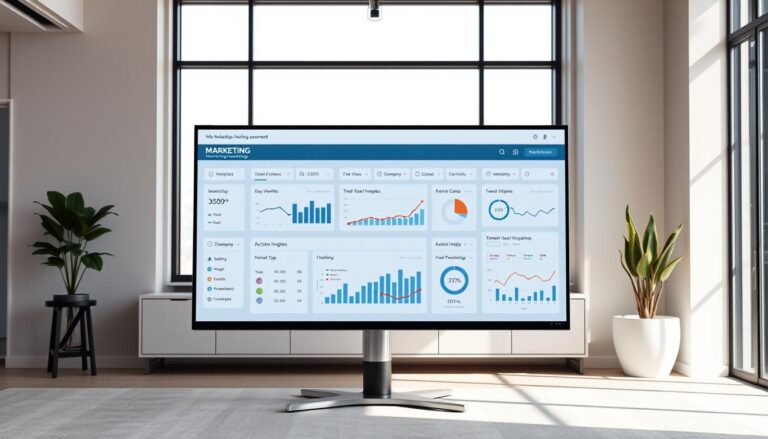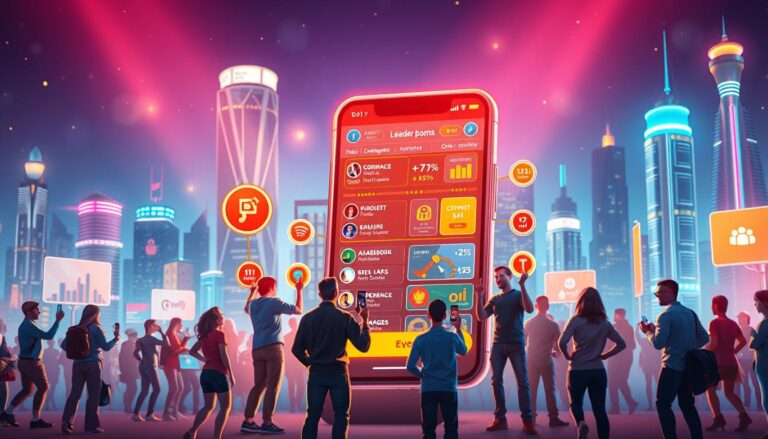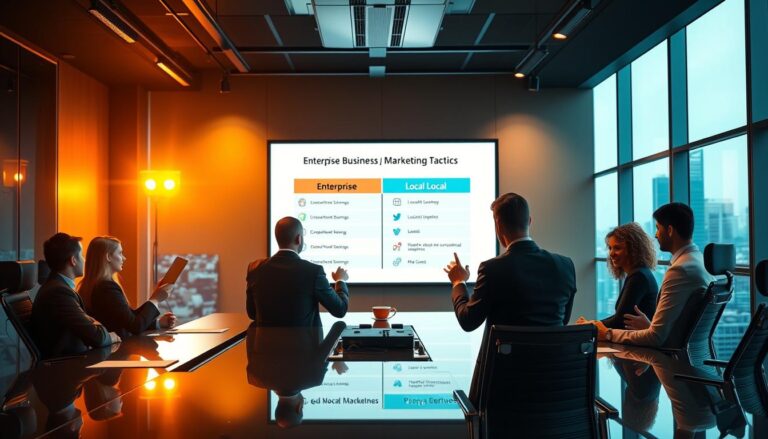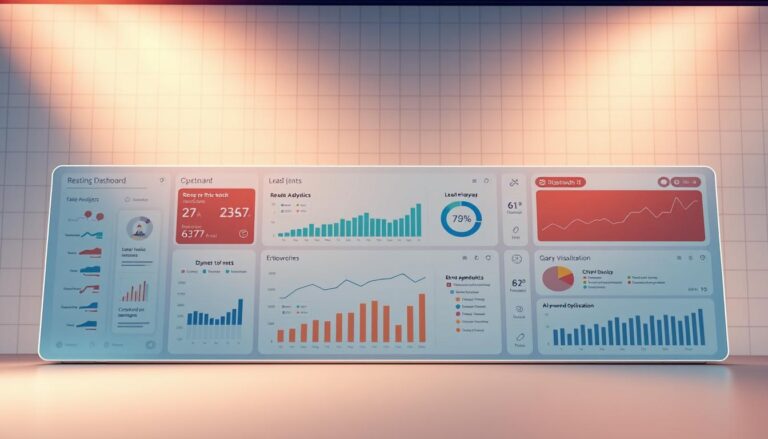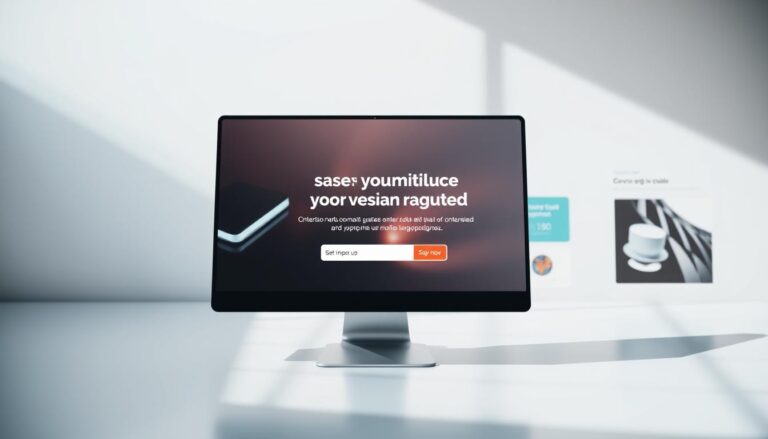5 Ways AI Is Secretly Revolutionizing Local Business Marketing
You’re up against big companies with lots of money and teams to find customers. It’s tough when you’re doing so much yourself just to keep things going.
But here’s the bright side: 83% of small business owners plan to use AI tools by 2025. They’re seeing big wins. Companies using AI marketing tools get 10-30% more return than old-school campaigns. This is your chance to level the playing field.
AI tools now do the hard work that used to need expensive experts. They handle tasks like talking to customers and finding the right leads. You get top-notch results without needing to be a tech whiz.
Think about this: 68% of businesses see their ROI grow after using AI. With 46% of Google searches for local services, the chance to grow is huge. This guide shows you five ways to connect better with customers and boost your sales.
Key Takeaways
- AI automation cuts down on manual work, letting you focus on what matters most while keeping results high
- Small business owners see 10-30% more return on investment with AI-powered ads compared to old methods
- You don’t need to be a tech expert to use these tools—modern platforms are made for business owners, not programmers
- AI predictive analytics find and focus on the best leads for you, boosting your chances of making a sale
- AI-powered real-time personalization makes experiences for customers across all channels at once
- With 46% of Google searches for local services, AI helps you grab customers who are looking for what you offer
1. AI-Powered Chatbots Transform Customer Engagement Around the Clock
Imagine having a team member ready 24/7 to answer questions and book appointments. AI chatbots for business make this a reality for local companies in the U.S. They don’t just respond automatically; they connect with customers even when you’re not there.
The modern customer journey needs quick, personalized experiences. Customers expect instant answers to their questions. Customer service automation fills this gap with consistent, accurate responses that reflect your brand.
Recent data shows AI chatbots can handle up to 80% of routine customer inquiries automatically. This includes questions about hours, location, and product availability. If you spend 10 hours a week on these, automation can cut that to 2-3 hours, improving response times and satisfaction.

Seamless Integration for Instant Customer Response
Setting up AI chatbots for business is easy and doesn’t require technical skills. They integrate with your current communication channels. Customers can chat with them on Facebook Messenger, your website, text, and Instagram.
Teaching your chatbot about your business is key. You’ll program it with product and service info, pricing, and policies. It can also learn local knowledge, like directions and events, giving you an edge over big competitors.
Modern marketing automation software lets you customize your chatbot’s personality. Whether you’re a law firm or a coffee shop, your responses will feel authentic. This technology enhances the human touch that makes local businesses special.
These systems understand context and can handle multi-turn conversations. They keep the conversation flowing like a human would. This ensures customers get the info they need without getting frustrated.
Revolutionizing Appointment Scheduling and Bookings
Phone tag and missed appointments waste time and money. Customer service automation solves this by letting customers book services directly. Your chatbot can check availability and confirm appointments instantly.
Booking is simple for customers. They tell the chatbot what service they need and when. The system offers available slots and handles the scheduling. Customers get immediate confirmation and reminders as the appointment approaches.
This automation cuts down on no-shows and last-minute cancellations. Customers are more likely to reschedule through the chatbot. Your marketing automation software sends reminders, keeping appointments on track without manual follow-up.
The system also handles scheduling issues automatically. If a customer needs to cancel or reschedule, the chatbot updates your calendar in real-time. It can even suggest alternative times or waitlist customers, maximizing your bookings without extra work.
| Business Function | Manual Process Time | Chatbot Automation Time | Weekly Time Savings |
|---|---|---|---|
| Answering routine inquiries | 10 hours | 2 hours | 8 hours |
| Appointment scheduling | 6 hours | 1 hour | 5 hours |
| Providing directions and basic info | 4 hours | 0.5 hours | 3.5 hours |
| Follow-up reminders | 3 hours | 0.25 hours | 2.75 hours |
Gathering Valuable Insights Through Conversational Interactions
Every chatbot conversation adds valuable data to your marketing strategy. AI chatbots for business go beyond simple automation. They track customer questions, interests, and pain points.
This data reveals customer preferences and behaviors. If many customers ask about a product feature, highlight it in your marketing. If return policy questions are common, make that info more visible on your website.
Customer service automation platforms turn this data into actionable reports. You’ll see patterns in customer inquiries and common concerns. This helps you refine your offerings and address customer needs better than competitors.
The data capture is natural through conversation, more genuine than surveys or forms. Customers share info freely when seeking help or booking. Your marketing automation software can segment this data, identifying high-value customers and building detailed profiles for personalized marketing.
Integration with your CRM ensures chatbot interactions are part of each customer’s history. When a customer returns, the system remembers previous conversations and preferences. This creates continuity and strengthens relationships, giving you a competitive edge.
For local businesses, this combination of 24/7 availability, efficient scheduling, and data gathering transforms customer engagement. It’s not just about automating tasks; it’s about building a system that understands your community and serves your customers better, providing insights for strategic growth.
2. Hyper-Personalized Marketing Campaigns Through Machine Learning
Your customers want experiences that feel made just for them. Machine learning makes this possible. It lets you tailor your marketing to each customer’s unique needs and preferences. This change has made it easier for local businesses to compete.
What was once expensive and hard to get is now available to small businesses. You can send messages that seem made just for each person. This is because they actually are.
Segmenting Your Audience with AI-Driven Analytics Tools
Old ways of targeting customers are too broad. AI tools give you a clear view. Instead of just looking at age and location, machine learning looks at many behaviors at once.
Basic targeting might group people by age and location. But AI creates detailed groups like “women who love boutique clothes and shop on weekends.” This makes your marketing much more effective.
AI looks at what people browse, buy, and where they are to create detailed profiles. You’ll find patterns you never knew about. Some people love discounts, while others want new products first.
AI can increase leads by up to 50% with its smart targeting. It doesn’t just group people; it predicts what they’ll do next.
| Segmentation Approach | Traditional Method | AI-Driven Method | Impact on Conversion |
|---|---|---|---|
| Data Points Used | 5-10 basic demographics | 100+ behavioral signals | 3-5x improvement |
| Update Frequency | Monthly or quarterly | Real-time continuous | 2-3x improvement |
| Personalization Level | Broad group messaging | Individual preferences | 4-6x improvement |
| Prediction Capability | Historical averages only | Future behavior forecasting | 2-4x improvement |
Creating Dynamic Content That Adapts to Individual Customer Behavior
Static messages miss many chances to connect. Dynamic content changes based on who’s seeing it and when. This is where machine learning really shines.
The same email can show different things to different people. Customer A sees items they’ve looked at before, while Customer B sees things they’ve bought. Neither customer gets generic content—they get what’s most relevant to them.
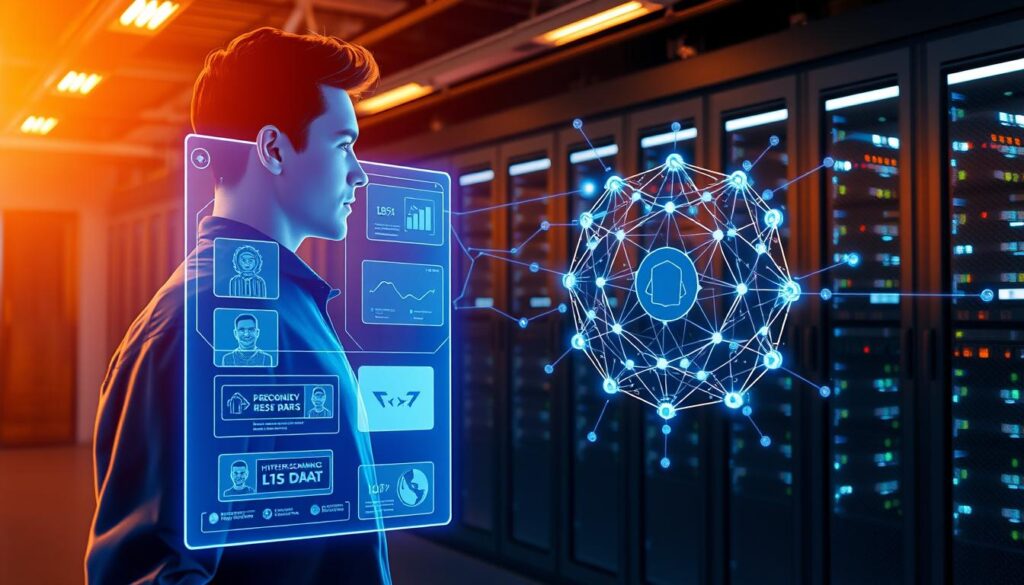
AI can adjust ads based on local events and weather. A coffee shop might promote iced drinks on hot days and warm pastries in the cold. A hardware store might push snow removal gear before a storm.
This level of response was impossible before. Now, AI handles it automatically, responding in real-time. Your marketing stays relevant without needing to watch every detail.
AI looks at browsing, buying, and location to send content that’s just right. This makes your marketing feel helpful, not intrusive.
Optimizing Email Marketing with Predictive Send Times
Sending the same email at the same time is a waste. AI shows that people check email at different times. Some check in the morning, others at lunch, and many after work.
Predictive algorithms find the best time to send emails to each person. It learns when John opens emails and when Sarah does.
Your email platform then sends messages at the best time for each person. This simple change can greatly improve open rates and conversions without changing your email.
AI also picks the best subject lines for different groups. What appeals to budget shoppers is different from what premium buyers like. Machine learning figures out these preferences automatically.
Beyond timing, AI adjusts how often to send emails to each person. Some like daily updates, others weekly digests. The system changes send frequency based on how people engage, reducing unsubscribes and increasing chances to connect. This smart approach to growth marketing means you’re always reaching customers when they’re most open to hearing from you.
3. Local Business Marketing Automation Streamlines Multi-Channel Campaigns
Marketing automation changes how local businesses manage their online presence. You no longer spend hours switching between platforms. Instead, you manage everything from one place.
This change is more than just saving time. It’s a big shift in how you reach your customers efficiently.
Most local business owners spend 10 to 15 hours a week on ads. With marketing automation for small business, this time drops to 2 to 3 hours. You get 12 hours back and better results.
AI systems watch your campaigns all day, making changes humans can’t. They boost high-performing ads and pause the ones that don’t work. This way, every dollar works harder for your business.
“The key to successful marketing isn’t working harder—it’s working smarter by letting automation handle repetitive tasks while you focus on strategy and customer relationships.”
Coordinating Social Media Posts Across Multiple Platforms Simultaneously
Social media automation makes sharing your message easy. You can plan and schedule content for Facebook, Instagram, Twitter, and LinkedIn from one place. This saves time and keeps your brand message consistent.
Each social platform has its own audience and content style. Automation lets you tailor your message for each platform. You might share a detailed article on LinkedIn, a visual story on Instagram, and a quick tip on Twitter—all from one planning session.
This approach saves time and ensures quality. You’re not rushing to post, which reduces mistakes and keeps your brand consistent.
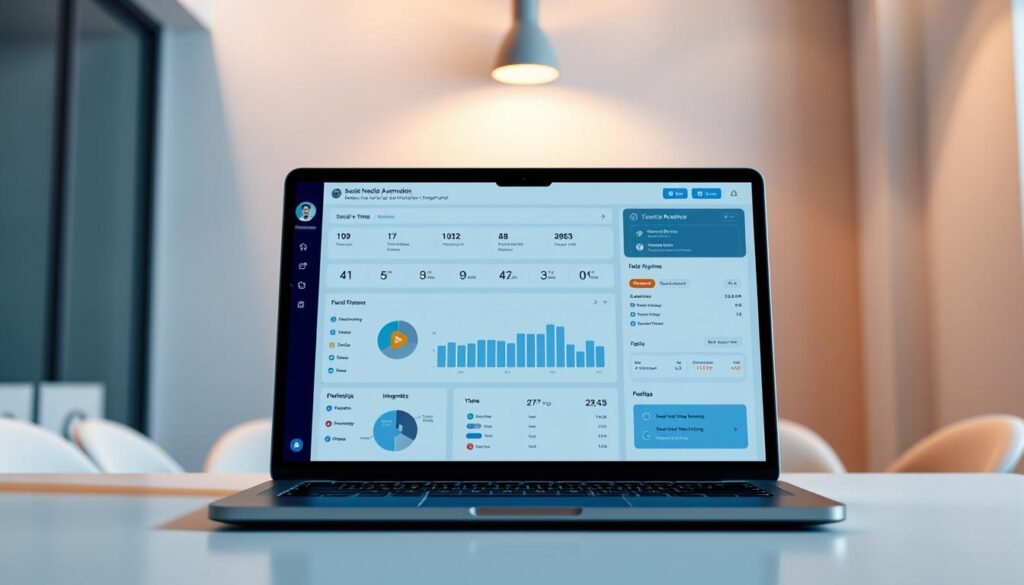
Automated campaign management tracks how your content performs. This shows you what works best with different audiences. You can then refine your strategy to focus on what works.
Automating Google My Business Updates and Review Response Management
Your Google My Business profile is key to attracting customers. Automation makes it easy to keep it up-to-date with hours, offers, and announcements.
Handling reviews can be tough for busy owners. AI tools now respond to reviews, keeping your brand voice consistent. They learn from your responses and adapt to your style.
These systems thank customers for positive reviews and address concerns in negative ones. This shows you value feedback and manage your reputation well.
Using automated campaign management for Google My Business can improve your local search rankings. Google favors businesses that update their info and engage with reviews. Automation ensures you never miss these opportunities.
Integrating CRM Systems with Automated Marketing Workflows
The power of marketing workflow automation grows when you link your CRM with marketing platforms. This creates seamless workflows that respond to customer actions automatically. Every interaction strengthens relationships without manual effort.
When a new customer inquires, an integrated system sends a welcome email series. After a purchase, it starts a new sequence with thank-you messages and offers. No customer is left behind because the system manages every touchpoint.
Customer service interactions also inform future marketing messages. If someone contacts support about an issue, the system adjusts future communications. You deliver personalized experiences at scale, which was hard without a big team.
This efficiency saves money. Businesses see a 30% reduction in cost per acquisition. They spend less and get more customers because every campaign runs efficiently.
These integrated services adjust bids and optimize ad delivery times. They shift budgets between campaigns based on performance. The system makes hundreds of adjustments daily, leading to big improvements over time.
Your role changes from doing tasks to making big decisions. Automation handles the details, ensuring your vision reaches customers across all channels.
4. Predictive Analytics Anticipate Customer Needs Before They Buy
Most businesses react to customer behavior after it happens. But predictive analytics lets you stay ahead. It turns raw data into insights, showing patterns that humans can’t see.
By using predictive analytics marketing, you shift your strategy. You’re no longer stuck in reactive mode. AI analyzes many data points to forecast what customers will want next.
This proactive approach gives local businesses a crucial competitive advantage. Knowing what customers need before they look for it lets you position your business perfectly. This leads to more efficient marketing, higher conversion rates, and stronger customer relationships.
Forecasting Sales Trends with Advanced Analytics
AI-powered data analysis makes sales forecasting accurate. Traditional methods rely on last year’s numbers and guesses. Modern AI systems analyze many data streams to predict sales with high accuracy.
Your business can use these insights for smarter decisions. For example, a local restaurant might discover demand spikes for certain menu items before local sporting events. This lets you order ingredients just in time, reducing waste and ensuring popular dishes are always available.
Accurate sales forecasting also improves inventory management and staffing. Knowing which products or services will be in demand next quarter helps you focus your marketing. This means investing in the right offerings at the right time, maximizing your return on every dollar.
AI attribution tracking shows which marketing channels drive sales, not just clicks. It follows customers from their first interaction with your advertising to their purchase. This complete journey mapping helps you understand which channels actually drive sales.
Identifying High-Value Customers for Strategic Growth
Not all customers are equal. AI-powered data analysis identifies your most valuable customers. It looks at purchase frequency, average transaction size, and referral behavior to find your best customers.
Once you know who your best customers are, AI helps you find more like them. This targeted acquisition strategy focuses your marketing budget on the right prospects. Instead of casting a wide net, you’re fishing in waters where the best catches swim.
The impact on marketing ROI tracking is clear. Investing in acquiring customers who make repeated purchases lowers your customer acquisition cost. Many businesses see their customer lifetime value increase by 25-40% by focusing on the right audience.
Predictive analytics can also forecast customer churn before it happens. The AI identifies patterns that indicate a customer is about to leave. This lets you offer personalized retention offers, keeping customers from leaving.
Optimizing Budget Through Intelligent Allocation
Marketing budget allocation is a tough decision for local business owners. Traditional methods often rely on arbitrary percentages or repeating last year’s distribution. Predictive analytics marketing turns this guesswork into data-driven precision, continuously monitoring campaign performance and recommending budget adjustments.
AI systems forecast which campaigns will drive the most revenue based on early performance indicators. If your Google Ads campaign shows strong conversion signals early on, the AI might recommend shifting budget to capitalize on the winning strategy. This dynamic optimization happens faster than competitors can react, giving you first-mover advantage in your market.
The reduction in marketing waste can be substantial. Businesses implementing AI-driven budget allocation typically see their cost per acquisition drop by 30% or more within the first quarter. You’re no longer throwing money at channels or messages that don’t resonate with your audience. Instead, every dollar flows toward tactics proven to generate results.
Marketing ROI tracking becomes transparent and actionable with predictive analytics. The system doesn’t just tell you what performed well last month—it predicts which investments will perform best next month. This forward-looking perspective allows you to make strategic decisions about where to increase spend, where to reduce investment, and which new channels deserve testing.
| Marketing Approach | Traditional Methods | Predictive Analytics | Key Advantage |
|---|---|---|---|
| Budget Allocation | Fixed percentages based on history | Dynamic adjustment based on performance forecasts | 30-40% improvement in ROI |
| Customer Targeting | Broad demographic segments | AI-identified high-value prospect profiles | 25% higher conversion rates |
| Sales Forecasting | Last year’s data plus adjustments | Multi-variable AI predictions | 85%+ accuracy in forecasts |
| Campaign Optimization | Monthly or quarterly reviews | Real-time performance monitoring | Faster response to market changes |
The competitive advantage of predictive analytics extends beyond immediate cost savings. Consistently making better-informed decisions than competitors who rely on outdated methods builds sustainable market leadership. Your business becomes more agile, efficient, and better positioned to capture emerging opportunities before others recognize they exist.
5. AI Content Generation Accelerates Marketing Material Creation
Your local business can now create compelling marketing materials without hiring expensive agencies or full-time designers. Advances in AI-generated marketing content make professional-quality content accessible. This means you can compete with larger competitors while keeping costs low.
Research shows that 68% of businesses saw ROI growth after using AI for content creation. What used to take a designer 2-3 days now takes minutes with AI tools. You can create dozens of ad variations for a fraction of the cost, saving money.
AI doesn’t replace your creative vision. It enhances it by handling technical tasks. This partnership boosts how quickly you can launch campaigns and respond to market changes.
Producing Social Media Posts and Ad Copy at Scale
Creating content for different platforms and audience segments used to take hours. AI content creation tools can generate multiple ad copy variations quickly. They test different psychological triggers and marketing angles.
You can now create headlines that highlight various benefits for different audience segments. For example, one version might focus on convenience for busy professionals, while another emphasizes value for budget-conscious customers. The AI handles the copywriting, and you provide the strategic direction.
This capability transforms your testing capabilities. Consider these advantages:
- Speed advantage: Generate 20-30 social media post variations in the time it takes to manually write three
- Consistency maintenance: Keep your brand voice consistent across all platforms and campaigns
- A/B testing expansion: Test multiple messages simultaneously to identify what resonates with your audience
- Platform optimization: Automatically adjust content length and style for different social media platforms
- Call-to-action variety: Create different CTAs that appeal to various stages of the customer journey
AI tools analyze which message formats perform best in your industry. They suggest improvements based on engagement data from thousands of similar businesses. This means your content benefits from collective intelligence, not just trial and error.
Generating Local SEO-Optimized Content for Better Search Rankings
Local SEO automation helps customers find your business when they search for services in your area. AI analyzes search patterns specific to your location and creates content optimized for local searches. This technical precision ensures your content sounds natural and engaging.
Voice search is changing how customers discover businesses. Instead of typing “pizza restaurant downtown,” they ask their phones “where can I get good pizza near me right now?” AI optimizes for these conversational queries.
Your content strategy gains several critical advantages through AI optimization techniques:
| Content Aspect | Traditional Approach | AI-Powered Approach |
|---|---|---|
| Research Time | 4-6 hours per article researching keywords and competitors | 15-30 minutes with AI analyzing search trends and gaps |
| Local Optimization | Manual insertion of city names and location references | Natural integration of geo-specific terms and neighborhood context |
| Voice Search Ready | Requires separate optimization effort and testing | Automatically structures content for question-based queries |
| Update Frequency | Quarterly updates when time permits | Real-time adjustments based on trending local searches |
The AI handles technical SEO requirements like keyword density and meta descriptions. You provide the expertise about your business and what makes you different. This combination produces content that ranks well and converts visitors into customers.
Local content goes beyond just mentioning your city name. AI helps you create neighborhood-specific content and seasonal promotions tied to local events. This localization depth was previously only achievable with dedicated content teams.
Creating Video Scripts and Visual Content Recommendations
Video marketing was once expensive for small businesses. Production costs and equipment needs created barriers. AI content creation now guides the entire process from concept to final script.
AI tools suggest video concepts based on what’s performing well in your industry. They analyze trending topics and suggest improvements based on engagement data. You receive specific recommendations like “customer testimonial featuring your installation process” or “behind-the-scenes look at your quality control procedures.”
The script development process becomes dramatically simpler:
- Concept generation: AI suggests video ideas aligned with your marketing goals and current customer interests
- Script writing: Creates detailed scripts with scene descriptions, dialogue, and timing recommendations
- Visual style guidance: Recommends shot types, lighting approaches, and editing styles that match your brand
- Platform optimization: Adjusts script length and format for different platforms (Instagram Reels, YouTube, Facebook)
- Call-to-action integration: Suggests where and how to incorporate CTAs without disrupting viewer engagement
You don’t need professional videography skills to benefit from these tools. The AI provides frameworks that work with smartphone cameras and basic editing software. It suggests camera angles, background settings, and even music styles that complement your message.
Visual content recommendations extend beyond video. AI analyzes which image types, color schemes, and layout styles generate the most engagement for businesses like yours. You receive specific guidance about product photography angles, lifestyle imagery suggestions, and infographic concepts that simplify complex information.
This guidance transforms visual marketing from guesswork into strategic planning. You know which content types to prioritize based on data. The time and money saved on failed creative experiments can be redirected toward producing more of what actually works.
Professional-quality marketing materials are no longer exclusive to businesses with large budgets. AI content creation levels the playing field, allowing your local business to produce diverse, engaging content. This attracts customers and builds your brand presence across multiple channels simultaneously.
Conclusion
You’ve learned five key ways AI changes how you talk to customers. The real question is how fast you can start using these tools.
Numbers show AI’s power. Businesses using AI for marketing cut their ad work time from 10-15 hours a week to 2-3 hours. They see more sales and spend less on each customer. Plus, they make 10-30% more money than old ways.
Begin your digital change with one tool. Pick something like chatbots, predictive analytics, or making content. Master it first, then add more. Start with 20% of your ad budget for AI.
You don’t need a tech degree for AI marketing. Modern Local Business Marketing automation tools are made for you. By day 90, aim to use AI for 80% of your ads, freeing you to focus on strategy and creativity.
AI gives you a big edge. You’ll save 12+ hours a week, spend less on getting new customers, and keep up with big companies. AI boosts your ability to reach the right customer at the right time.
Your local market is changing fast. The winners will mix human creativity with AI’s efficiency. You’re ready to lead the way.

